Metaverses: the trend of 2022
What is the “metaverse”, and where did it come from?
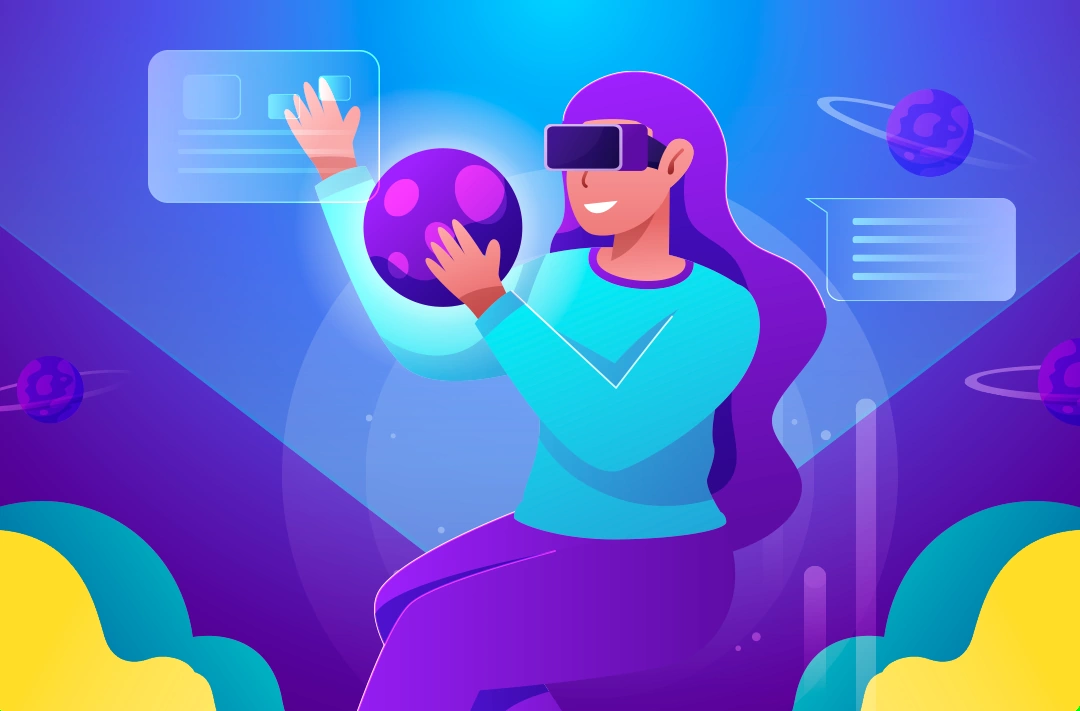
21.02.2022
4541
11 min
1
The global pandemic has fundamentally changed our world. Remote work, distance learning, contactless delivery, all burst into our lives out of the blue. Forced self-isolation gave rise to the development of new technologies through which people can interact with each other from the comfort of their own homes. With VR and AR technology, things are becoming possible that previously seemed possible only on the pages of fantasy books and in movies. Interaction between the real and virtual worlds, where people working remotely will be able to meet with colleagues; schoolchildren and students, to whom the world of knowledge will be opened from a new side. This Internet space has a name, that is, the metaverse.
The metaverse is a set of many technologies constantly working in virtual space, uniting users and all spheres of their lives.
The term was coined by science fiction writer Neal Stephenson in his 1992 novel “Avalanche.” In his novel, the “metaverse” is the next stage in the development of the Internet, combining physical and virtual realities. In this alternate world, only the rules and restrictions created by humans themselves work, and any interaction with each other takes place with the help of digital avatars. Although the novel describes a rather dystopian future, the idea of creating a metaverse in our reality is firmly embedded in many minds. After Stephenson, Ernest Cline used similar ideas of bringing virtual reality into the present in his novel “Ready Player One.” The book was adapted by Steven Spielberg in 2018.
A meta-universe may seem like the same thing as an MMORPG (massively multiplayer online role-playing game), but it is not, although there are many similarities: interaction between users, item creation, and resource extraction. In the metaverse, game elements are available as one of the activities and are not the main ones.
“It's important to understand that the metaverse is not a game, not hardware, and not an online experience. You might as well call World of Warcraft, the iPhone, or Google the Internet. But they are digital worlds, devices, services, websites, and so on. The Internet is a huge set of protocols, technologies, cables, and programming languages, and on top of that are access devices, content, and communication experiences. The metaverse will be like that, too,” Matthew Ball.
7 main features of the metaverse
The most accurate features of the metaverse were highlighted by venture capitalist Matthew Ball:
- Infinite existence.
- Real-time operation.
- There is no limit to the number of simultaneous users.
- There must be a fully functioning economy.
- "A single digital whole,” that is, merging the physical and digital worlds.
- Compatibility of data, assets, and content transferred between digital worlds.
- Content in the metaverse must be created by its users: individuals, groups, or commercial enterprises.
Why now?
Attempts to realize a metaverse have been made more than once. One of the most famous examples is the virtual world Second Life, more like a multiplayer game. The project was launched in 2003. In this three-dimensional space, players can communicate and buy virtual items. Second Life has its own virtual currency, L$ (Linden Dollars), which can be used to make payments for virtual goods and services. It is also possible to withdraw earned money to PayPal. In Second Life, users create their own content and choose their avatar's appearance. This virtual world has over 1 million active users.
Lockdown had a positive effect on the interest in the metaverse. The demand for remote work and virtual entertainment has increased, which in turn attracted big companies and brands. Facebook, Microsoft, Epic Games, Binance, Nike, and H&M are the main, but by no means the only ones. This interest is explained by the following feature: the metaverse cannot be created by a single company, because it combines different areas of activity.
Cryptocurrency in the metaverse
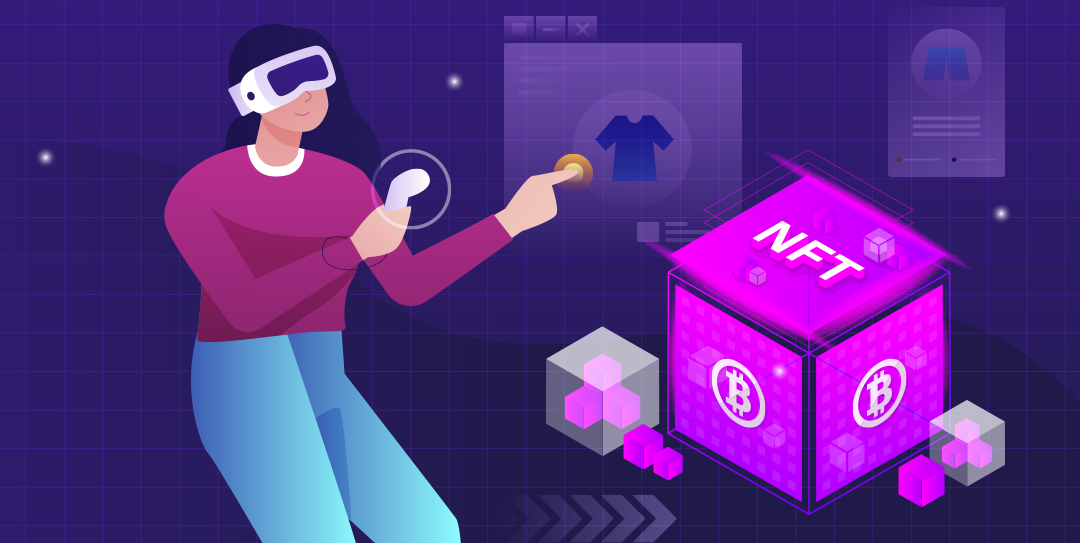
In the metaverse, where you can be anyone and do whatever you want, a separate financial system is needed, and cryptocurrency and NFT can play this role.
NFT stands for nonfungible tokens. Such tokens provide digital proof of ownership.
The blockchain technology on which the cryptocurrency relies has the necessary properties that are suitable for metaverses:
- Digital proof of ownership – you can easily confirm ownership of assets and goods;
- NFT digital collection;
- Transfer of value – you can pay with cryptocurrency anywhere and to anyone;
- Management - blockchain enables participants to make decisions on an equal footing by voting;
- Accessibility – anyone can create a crypto wallet, no documents are needed.
Now some large companies and developers of “play-to-earn” games have come closest to creating metaverses. Play-to-earn games are those in which users can earn income in cryptocurrency and NFT. Such games combine gameplay and financial instruments.
Let's look at some projects that combine the characteristics of the metaverse.
Zuckerberg's metaverse
The peak of the growing attention to the metaverse was the statement of the head of Facebook about the rebranding. On October 28, 2021, there was an online presentation at which Mark Zuckerberg announced that Facebook was changing its name to Meta. The infinity sign became the logo.
Zuckerberg talked about the concept of the metaverse, which would include elements of virtual and augmented reality. To use all the features of the metaverse, you will need VR/AR headsets.
A VR headset is a virtual reality helmet that facilitates full immersion and interaction with the virtual world.
An AR headset is an augmented reality helmet/glasses that allows you to interact with virtual objects in the real world. What the meta-universe is for, the head of Meta explains as follows:
"When I started Facebook, it was about the texts we were observing on the computer. We got camera phones and the Internet became more visual. Lately, communication has become faster, video has become the main way we perceive content. We have moved from home computers to phones with the internet, from text to photos and video, but it's not a dream come true, the next platform will be more exciting. The Internet, where you are a participant, not just an observer,” Mark Zuckerberg, head of Meta.
The cryptocurrency world will be interested in this project because of the Diem stablecoin from Facebook. The appearance of a full-fledged metaverse is a 5-10-year prospect, and meanwhile, Meta is engaged in the improvement of already working services and the development of new platforms and technologies.
After the presentation, the company's shares rose by more than 3%, which shows that people are interested.
Microsoft
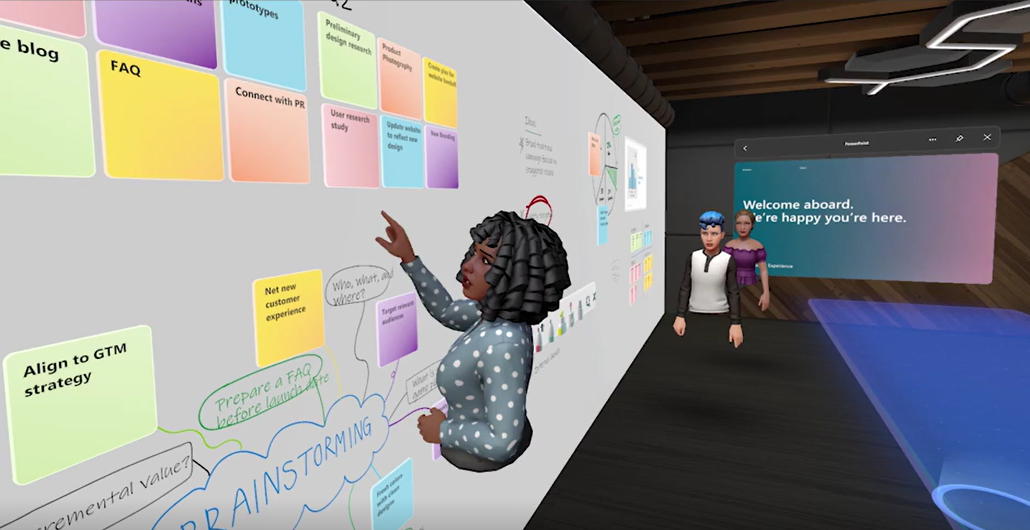
The Mesh for Teams software, a major development from Microsoft for the meta-universe, will be released in 2022. With Mesh, the company is going to create a permanent virtual office, in which it will be possible to fully solve work tasks. The “Corporate metaverse” will be available not only with VR/AR headsets but also without them, in 2D format. The digital identity of the employee will be an avatar. Microsoft CEO Satya Nadella showed by example the capabilities of Mesh. He visited the ISS, the Toyota plant, and the COVID-19 department in a British hospital. With this, Nadela demonstrated that with the development of technology, new opportunities come. Bill Gates predicts the abandonment of Zoom and Skype in the near future in connection with the development of metaverses. On January 18, it became known that Microsoft acquired game developer and publisher, Activision Blizzard. According to the company, this “will provide the building blocks for creating a metaverse.”
“Today, games are the most dynamic and exciting entertainment category on all platforms. They will determine the development of the metaverses. We are investing heavily in world-class content, community, and cloud computing to open a new era where gamers and game creators are put first,” Microsoft CEO Satya Nadella said.
The deal is scheduled to close in 2023. Not only is the workspace in development now, but also the gaming space, which greatly expands Microsoft's capabilities.
Fortnite
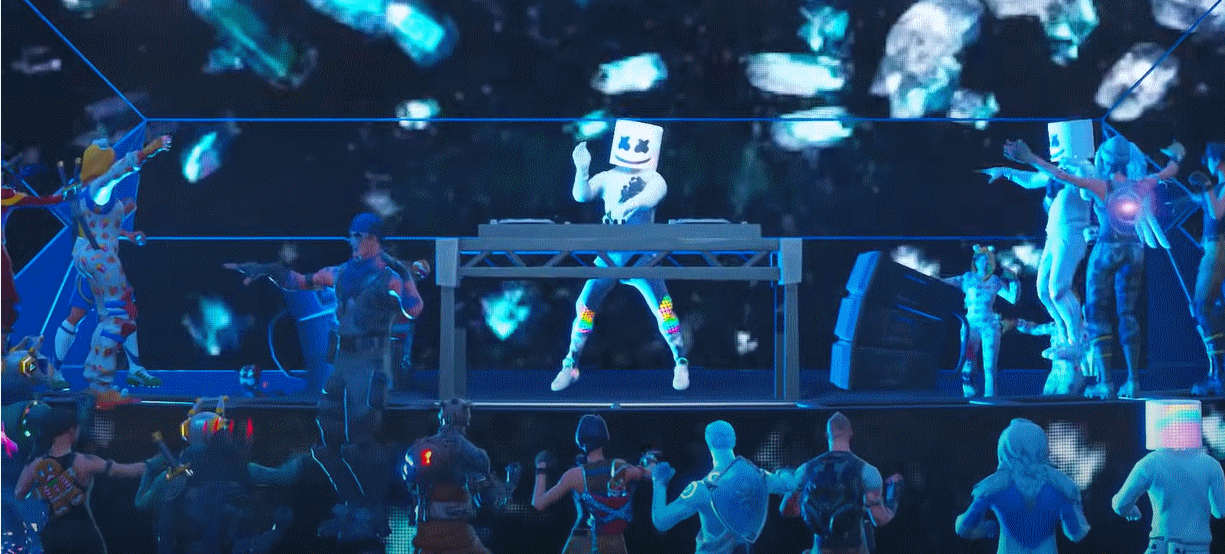
It is a “battle royale” game that Epic Games has positioned as a metaverse with an emphasis on social functions. The game has already become a cultural phenomenon, as users use it instead of social networks. In 2021, Epic Games raised $1 billion in investment “to support a long-term vision for the metaverse.” The company's goal is to create a virtual space where any brands and their intellectual property can exist together, reacting to different events. In Fortnite, users can not only play the “battle royale,” but also create avatars of their choice, go to concerts and movies, and pay with in-game currency V-Bucks. Players have already had the opportunity to visit the arena where the Super Bowl, the match that determines the champion of the National Football League, took place, and performers Ariana Grande and Travis Scott held their concerts inside the game. So far, all this is without VR/AR, but it's only a matter of time.
Decentraland
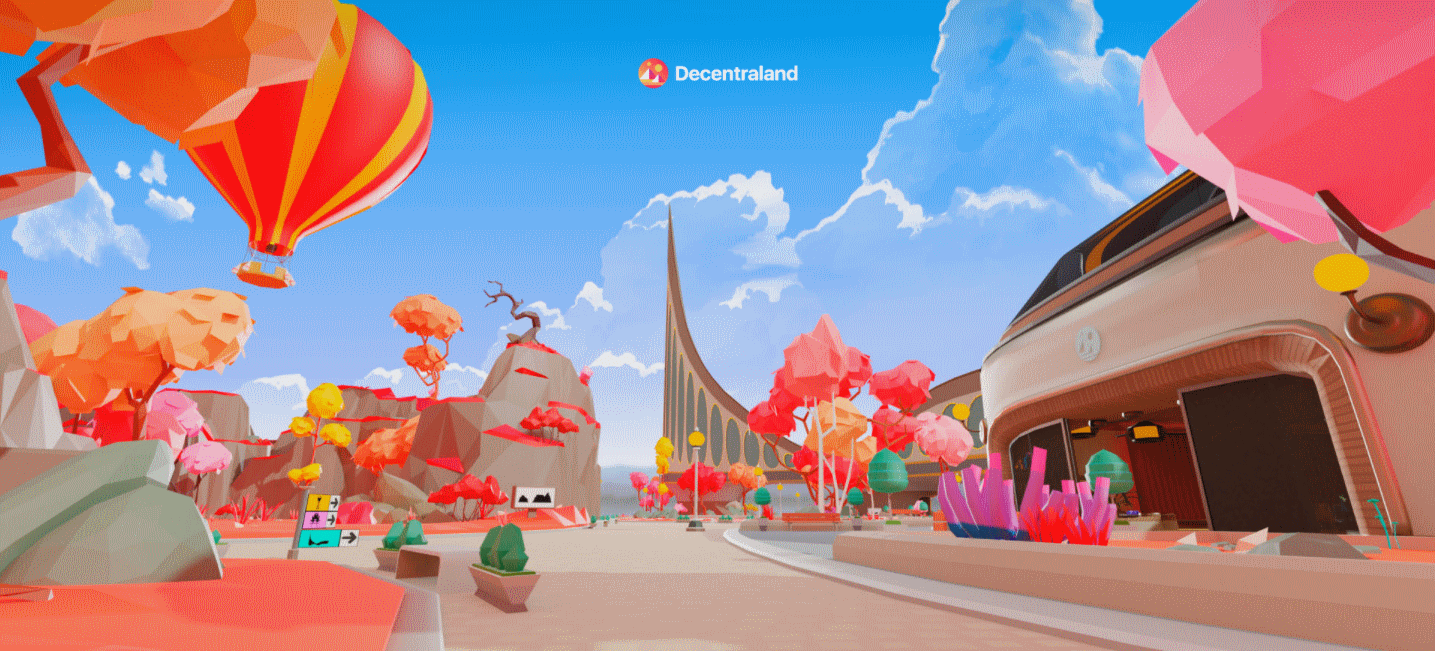
This platform allows you to take an active part in its management. You can explore this world using your phone, computer, or VR.
Users can communicate with each other, create and sell content. The content is the property of the users who created it and Decentraland has no claim to it. You can manage your own land plots called LAND. You will need MANA, the project's native token that runs on the Ethereum blockchain. Currently, the seller is charged a fee of 2,5% of the sale amount for any transaction on the internal marketplace.
There are 90 000 plots in total, about 48 000 cannot be bought because they belong to the project. The remaining plots can be bought, sold, or rented on the open market. For this, there is a marketplace of the platform and a trading platform on OpenSea, dedicated to Decentraland. The prices of the plots are high. Various NFTs can also be purchased on the marketplace: plots, clothing items, accessories, and unique names.
The MANA token ranks 32nd on CoinMarketCap in terms of capitalization.
The platform is constantly being updated, new features and capabilities are added. Tokens are traded on various platforms such as Binance. There is an opportunity to put your LAND and NFT up for auction.
Decentraland is growing rapidly, attracting more and more attention, it can be used for entertainment as well as for earnings.
Axie Infinity
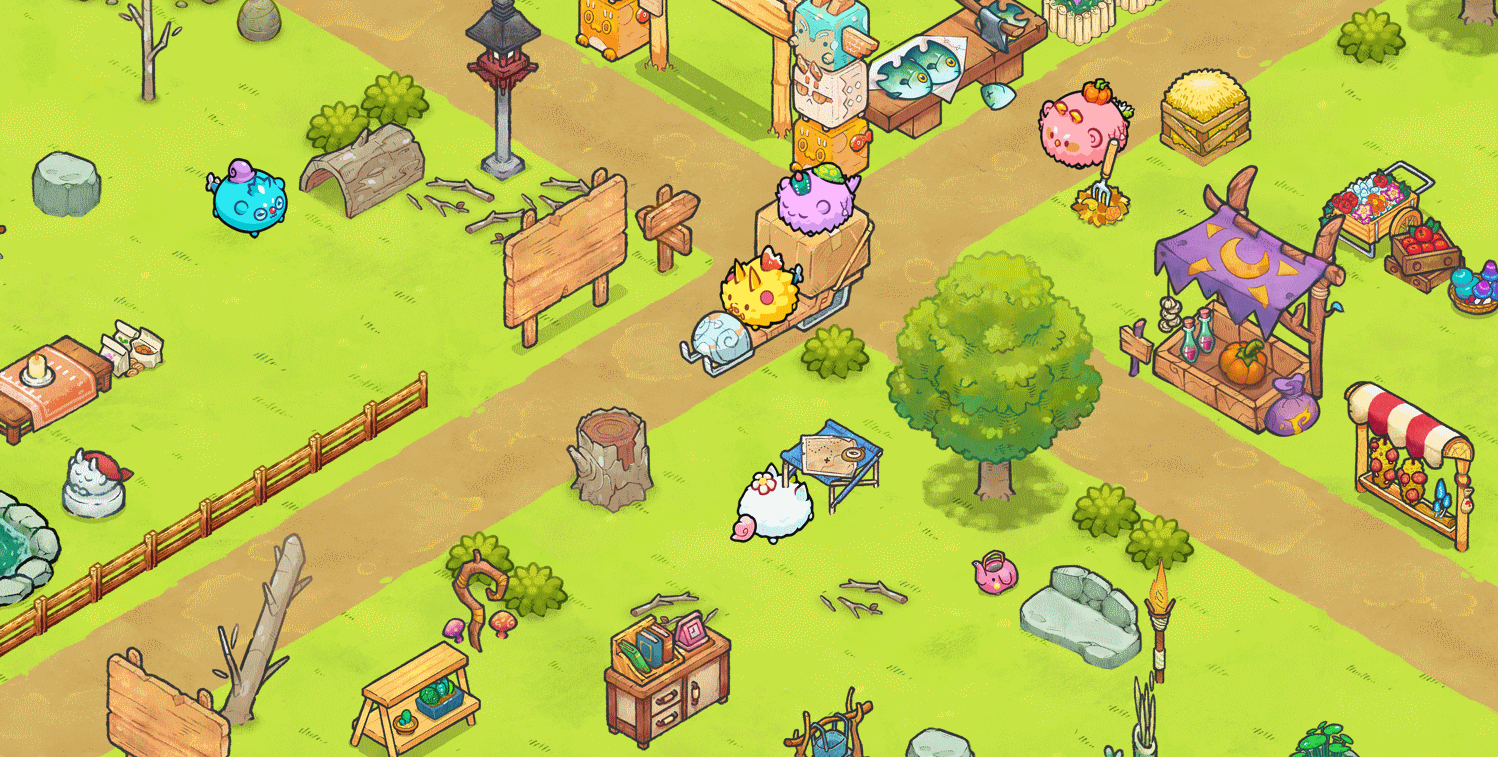
This is a game with fantastic characters in which you can not only play but also earn. The game is available on Android and iOS, and there are Windows and Mac versions for desktops. After downloading the game, you get into an open digital universe with virtual pets that you can breed on a purchased plot of land. You can also participate in arena battles.
The game uses AXS and SLP tokens on the Ethereum blockchain.
AXS is ranked 37th by CoinMarketCap.
Axie pets themselves are NFT tokens and are sold on the platform.
There are several ways to generate income in Axie Infinity:
- Raising and selling pets
- Competing in arena battles
- Betting on other players' teams in battles
- Renting plots
The game itself is not free. The first thing you need to do is purchase 3 Axes.
The Sandbox
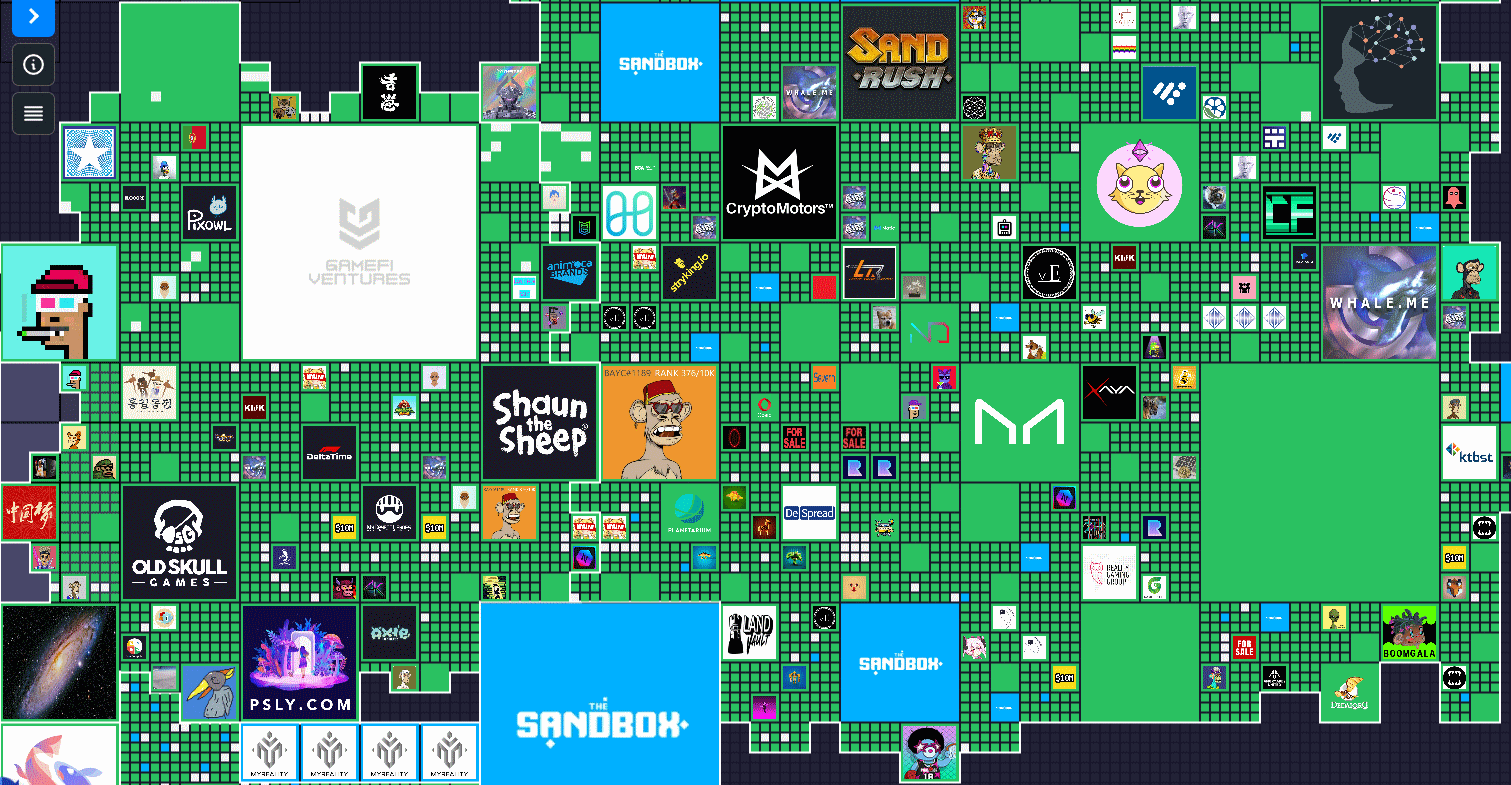
A blockchain-based virtual world in which land and other assets can be bought and sold using a SAND coin (powered by Ethereum). Sandbox makes the most of blockchain. Having its own token greatly simplifies the process of conducting transactions on the platform.
SAND is ranked 40th by CoinMarketCap.
The Sandbox allows users to decide for themselves how to use it: you can create your own game or play other ones, own and manage the virtual property (NFT). It allows users to be both creators and players at the same time.
This world has received support from SoftBank, a Japanese holding company that works in telecommunications, finance, and marketing. Gaming industry brands such as Atari, Helix, and CryptoKitties have also invested in Sandbox. In the Sandbox metaverse, players are involved in creating content, which in turn helps further develop the platform.
Star Atlas
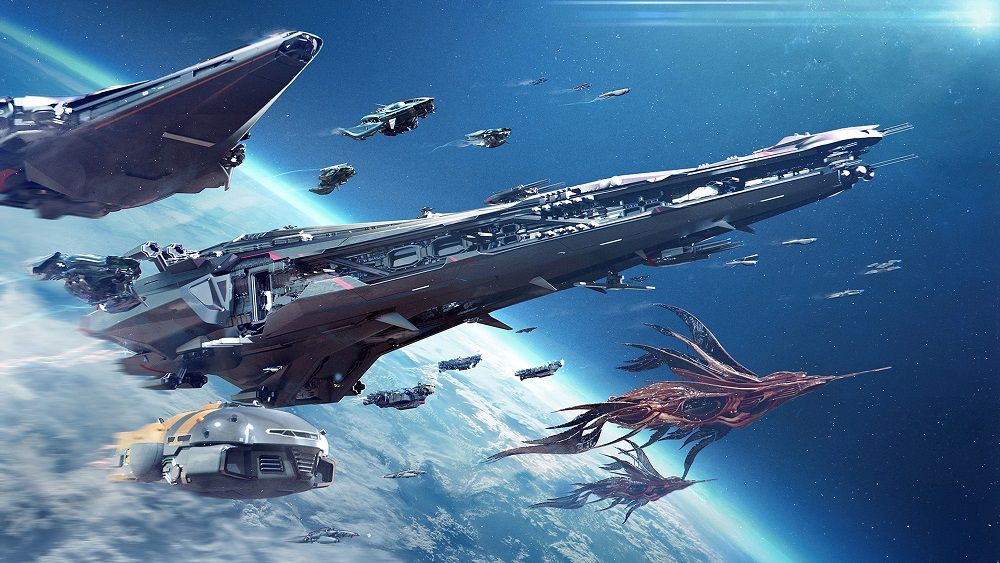
This is a multiplayer strategy game where you can explore space, trade, and fight, but unlike Eve Online, Star Atlas' economy is tied to cryptocurrency. The token of the metaverse is ATLAS, which runs on the Solana blockchain. It is the main in-game currency, allowing the purchase of ships, equipment, and land. ATLAS is used to trade on the in-game exchange.
You can also use the POLIS token in the internal politics of the game. With it, you can influence the metaverse, such as setting taxes and fines on your territory. Star Atlas is a world with NFT and two tokens; they create an economy that replicates the tangible value of assets and possessions in the real world. The main exchanges for in-game asset trading are FTX, ZT, Gate.io, MEXC, and Raydium.
Common future of cryptocurrencies and the metaverse
The use of blockchain and cryptocurrencies was something sci-fi not so long ago, and today it is confidently being integrated into our daily life. Along with crypto platforms, the metaverse is developing, which has infinite potential.
Many major players of the crypto-world, such as Binance, Kucoin, and Gemini, are rooting for the idea of a metaverse. They invest in projects that in the future can create a single metaverse, which will take the Internet to the next level.
It is hard to say yet which projects will be successful in the future, but many already seem promising. The metaverse is still evolving, and how it will look and function in its final form is not yet clear.
Useful material?
Basics
Why Satoshi Nakamoto’s technical manifesto for a decentralized money system matters
Oct 31, 2022
Basics
Experts evaluated the development prospects of the new ecosystem and the investment attractiveness of its token
Oct 20, 2022
Basics
How to track fluctuations correctly and create an effective income strategy
Sep 13, 2022
Basics
Review of the most profitable offers from proven trading platforms
Aug 29, 2022
Basics
The Ethereum Foundation team has published a breakdown of major misconceptions about the upcoming network upgrade
Aug 18, 2022
Basics
What benefits the exchange offers, and what else is in the near future
Aug 4, 2022









 Telegram
Telegram  Twitter
Twitter